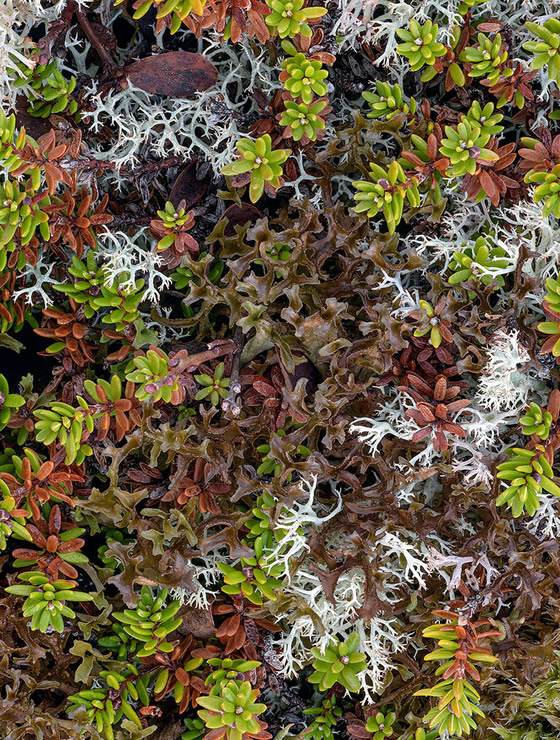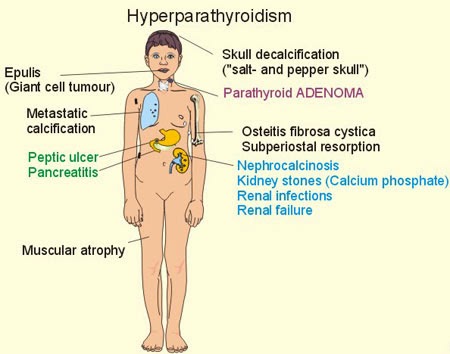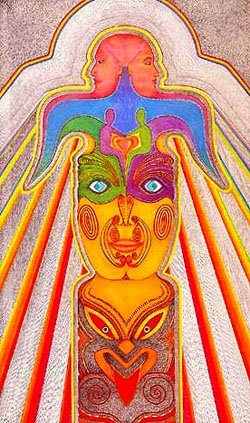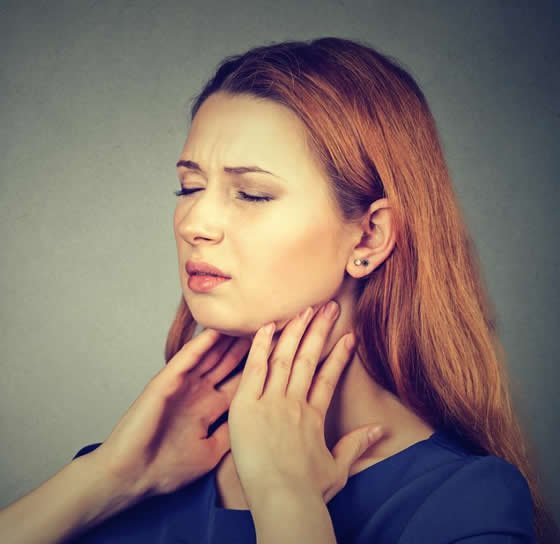Iceland Moss
Iceland moss (Cetraria islandica) is a lichen (a moss-like plant) that grows on the ground in mountains, forests, and arctic areas. In addition to Iceland, the lichen is found in Scandinavia, Great Britain, North America, Russia, and other areas in the Northern Hemisphere. Iceland moss also grows in Antarctica.
The plant’s thallus (shoot) curls from 1–4 in (2.5–10 cm) tall. The dried thallus is used as an herbal remedy. Iceland moss is also known as Iceland lichen, cetraria, fucus, muscus, and eryrngo-leaved (spiny-leaf) liverwort.
General use
Iceland moss is rich in calcium, iodine, potassium, phosphorous, and vitamins. The lichen is a bitter-tasting plant that is said to smell like seaweed when it is wet. Despite these unappetizing characteristics, Iceland moss has long been used in Scandinavia and Europe as a food source and a remedy for numerous conditions.
Ignatia
Ignatia is a homeopathic remedy that is derived from the bean of a small tree that is native to the Philippine Islands and China. The tree belongs to the Loganiaceae family, and has long, twining, smooth branches.
On the branches grows a fruit that is the size and shape of a pear. Inside the fruit are almond-shaped seeds, or beans, that have a fine, downy covering and are blackish gray or clear brown in color.
The Latin name is Ignatius amara, amara being the Latin work for bitter. The bean was named after St. Ignatius Loyola, a Spanish Jesuit who was responsible for bringing the beans to Europe from the Philippines in the seventeenth century.
Infant Massage
 |
| Infant Massage |
Infant massage refers to massage therapy as specifically applied to infants. In most cases, oil or lotion is used as it would be on an adult subject by a trained and licensed massage therapist. Medical professionals caring for infants might also use massage techniques on infants born prematurely, on those with motor or gastrointestinal problems, or on those who have been exposed to cocaine in utero.
The practice of massaging infants dates back to ancient times, particularly in Asian and Pacific Island cultures; that is, massage was a component of the baby’s regular bath routine among the Maoris and Hawaiians. Touch in these cultures is considered healthful both physically and spiritually.
In the West, however, infant massage has received more attention in recent years in conjunction with the popularity of natural childbirth and midwife-assisted births. Dr. Frédéric Leboyer, a French physician who was one of the leaders of the natural childbirth movement, helped to popularize infant massage through his photo-journalistic book on the Indian art of baby massage.
Infertility
Infertility is the failure of a couple to conceive a pregnancy after trying to do so for at least one full year. In primary infertility, pregnancy has never occurred. In secondary infertility, one or both members of the couple have previously conceived, but are unable to conceive again after a full year of trying.
Approximately 20% of couples struggle with infertility at any given time. Infertility has increased as a problem over the last 30 years. Some studies blame this increase on social phenomena, including the tendency for marriage and starting a family to occur at a later age. For women, fertility decreases with increasing age:
- Infertility in married women ages 16–20 = 4.5%.
- Infertility in married women ages 35–40 = 31.8%.
- Infertility in married women over the age of 40 = 70%.
Presently, individuals often have several sexual partners before they marry and try to have children. This increase in numbers of sexual partners has led to an increase in sexually transmitted diseases.
Hiccups
Hiccups are the result of an involuntary, spasmodic contraction of the diaphragm followed by the closing of the throat.
Virtually everyone experiences hiccups, but they rarely last long or require a doctor’s care. Occasionally, a bout of hiccups will last longer than two days, earning it the name “persistent hiccups.” Very few people will experience intractable hiccups, in which hiccups last longer than one month.
A hiccup involves the coordinated action of the diaphragm and the muscles that close off the windpipe (trachea). The diaphragm is a dome-shaped muscle separating the chest and abdomen. It is normally responsible for expanding the chest cavity for inhalation.
High-fiber Diet
 |
| High-fiber Diet |
Fiber is the material that gives plants texture and support. Dietary fiber is found in many plant foods, including fruits, vegetables, beans, nuts, and whole grains. Although fiber is primarily made up of carbohydrates, it does not have a lot of calories and usually is not broken down by the body for energy. Fiber is sometimes called roughage.
There are two types of fiber: soluble and insoluble. Insoluble fiber, as the name implies, does not dissolve in water because it contains high amounts of cellulose. Insoluble fiber is found in grain brans, fruit pulp, and vegetable peels or skins. Soluble fiber is the type of fiber that dissolves in water. It can be found in a variety of such fruits, grains, and vegetables as apples, oatmeal and oat bran, rye flour and dried beans.
Although the two types of fiber share some common characteristics such as being partially digested in the stomach and intestines and being low in calories, each type has its own specific health benefits. Insoluble fiber speeds up the movement of foods through the digestive system and adds bulk to the stools; it helps to treat constipation or diarrhea and prevents colon cancer.
High Sensitivity C-reactive Protein Test
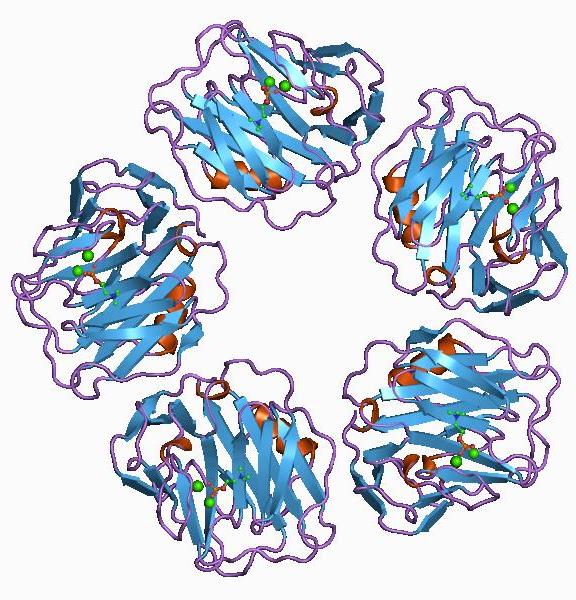 |
| C-reactive Protein |
The high sensitivity C-reactive protein (hsCRP) test is a blood assay used to estimate an individual’s risk for heart disease and stroke. The test also measures the presence of inflammation or infection.
In the late twentieth century, the primary methods of measuring a person’s risk of heart disease included traditional factors such as age, family history of heart disease or stroke, past heart disease, smoking, obesity, and tests that measured lipids in the bloodstream, including low-density lipoprotein (LDL). Low-density lipoproteins (“bad” cholesterol) were previously considered the gold standard in risk factor prediction.
In the 1990s and early twenty-first century, several new tests came into widespread use. These tests are considered better predictors of heart disease risk. They include blood tests to measure the levels of homocysteine, lipoprotein(a), fibrinogen, and highly sensitive C-reactive protein. They are called emerging or nontraditional risk factors.
Hives
 |
| Hives |
Hives are an allergic skin reaction causing localized redness, swelling, and itching.
Hives are a reaction of the body’s immune system that causes areas of the skin to swell, itch, and become reddened. (The affected areas are called wheals.) When the reaction is limited to small areas of the skin, it is called urticaria. Involvement of larger areas, such as whole sections of a limb, is called angioedema.
Causes and symptoms
Causes
Hives are an allergic reaction. The body’s immune system is normally responsible for protection from foreign invaders. When it becomes sensitized to normally harmless substances, the resulting reaction is called an allergy. An attack of hives is set off when such a substance, called an allergen, is ingested, inhaled, or otherwise contacted.
It interacts with immune cells called mast cells, which reside in the skin, airways, and digestive system. When mast cells encounter an allergen, they release histamine and other chemicals, both locally and into the bloodstream.
Hodgkin’s Disease
Hodgkin’s disease, also called Hodgkin’s lymphoma, is a type of cancer involving tissues of the lymphatic system, or lymph nodes. Its cause is unknown, although some interaction between individual genetic makeup, family history, environmental exposures, and infectious agents is suspected.
Hodgkin’s lymphoma can occur at any age, although the majority of these lymphomas occur in people aged 15–34, and over the age of 60. Lymphoma is a cancer of the lymphatic system. Depending on the specific type, a lymphoma can have any or all of the characteristics of cancer: rapid multiplication of cells, abnormal cell types, loss of normal arrangement of cells with respect to one another, and invasive ability.
Causes and symptoms
Hodgkin’s lymphoma usually begins in a lymph node. The node enlarges and—similar to enlarged lymph nodes due to infectious causes—may or may not cause any pain. Hodgkin’s lymphoma progresses in a fairly predictable way, traveling from one group of lymph nodes to another unless it is treated. More advanced cases of Hodgkin’s involve the spleen, liver, and bone marrow.
Holistic Dentistry
 |
| Holistic Dentistry |
While traditional dentistry focuses only on the areas above the neck, holistic dentistry looks at the patient as a whole system and how the mouth relates to the rest of the body.
Origins
Applying a biological concept to the practice of dentistry began in the late 1800s, when the National Dental Association recognized the harmful effects of mercury (amalgam) fillings, and mandated that members of the association not use these on their patients.
As of 1997, this warning has been recognized and acted upon by several foreign countries that have either banned the use of mercury in fillings or are in the process of doing so. Supporters of holistic dentistry state that mercury in amalgam fillings causes ill effects when placed as an implant in the body.
Holistic Medicine
Holistic medicine is a term used to describe therapies that attempt to treat the patient as a whole person. That is, instead of treating an illness, as in orthodox allopathy, holistic medicine looks at an individual’s overall physical, mental, spiritual, and emotional well-being before recommending treatment.
A practitioner with a holistic approach treats the symptoms of illness as well as looking for the underlying cause of the illness. Holistic medicine also attempts to prevent illness by placing a greater emphasis on optimizing health.
The body’s systems are seen as interdependent parts of the person’s whole being. The body’s natural state is one of health, and an illness or disease is an imbalance in the body’s systems. Holistic therapies tend to emphasize proper nutrition and avoidance of substances—such as chemicals—that pollute the body. Their techniques are noninvasive.
Homeopathy
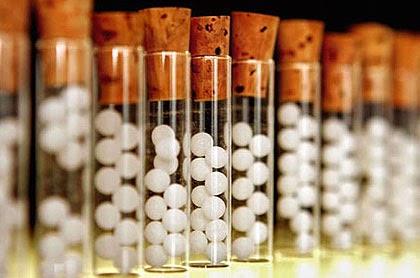 |
| Homeopathy |
Homeopathy, or homeopathic medicine, is a holistic system of treatment that originated in the late eighteenth century. The name homeopathy is derived from two Greek words that mean “like disease.”
The system is based on the idea that substances that produce symptoms of sickness in healthy people will have a curative effect when given in very dilute quantities to sick people who exhibit those same symptoms.
Homeopathic remedies are believed to stimulate the body’s own healing processes. Homeopaths use the term “allopathy,” or “different disease,” to describe the use of drugs used in conventional medicine to oppose or counteract the symptom being treated.
Acute Homeopathic Prescribing
 |
| Acute Homeopathic Prescribing |
Acute homeopathic prescribing is that part of homeopathy that treats illness of abrupt onset requiring immediate attention. In homeopathic medicine, acute refers primarily to the speed of onset and selflimiting character of the disorder rather than its seriousness.
Colds, influenza, sore throats, insect stings, cuts, bruises, vomiting, diarrhea, fever, muscle aches, and short-term insomnia are all examples of conditions that are treated by acute prescribing. The remedies given in acute homeopathic prescribing are intended to stimulate the body’s internal ability to heal itself; they do not kill germs or suppress symptoms.
Acute prescribing can be done—within limits—by patients at home, as well as by homeopathic practitioners. Study courses, self-treatment guides, and homeopathic home medicine kits are now available by mail order from homeopathic pharmacies and educational services.
Constitutional Homeopathic Prescribing
 |
| Constitutional Homeopathic Prescribing |
Constitutional homeopathic prescribing, also called classical prescribing, is a holistic system of medicine that has been practiced for more than 200 years. Unlike acute homeopathic prescribing, constitutional prescribing refers to the selection and administration of homeopathic preparations over a period of time for treatment related to what practitioners call miasmic disorders, those caused by an inherited predisposition to a disease.
The term miasm comes from a Greek word meaning stain or pollution. As in acute prescribing, constitutional prescribing is holistic in that it is intended to treat the patient on the emotional and spiritual levels of his or her being as well as the physical. Constitutional prescribing is also aimed at eventual cure of the patient, not just suppression or relief of immediate symptoms.
Homeopathy was developed during the 1790s by Samuel Hahnemann, a German physician. Experimenting on himself with the anti-malarial drug quinine, Hahnemann noticed that large doses of the medicine actually caused malaria-like symptoms, while smaller doses cured the symptoms.
Honeysuckle
Honeysuckle is a large, volubilate shrub of the genus Lonicera. There are over 300 species of honeysuckle in the Caprifoliaceae family, found from Asia to North America. The shrub reaches heights of 20–30 ft (6–9 m), with thin, hairy branches. It has ovoid leaves that range 1.2–3.2 in (3–8 cm) long by 0.6–1.6 in (1.5–4.0 cm) wide. The plant flowers in late spring or early summer, depending on the species.
Japanese honeysuckle (Lonicera japonica) blooms in the spring from April to May, with fragrant white flowers touched with a shade of purple that fade to yellow as they mature. The species of honeysuckle that is found in North America, the United Kingdom, and western Asia, Lonicera caprifolium, flowers in June.
Generally, honeysuckle flowers are 1.2–1.6 in (3–4) cm long, with an inner tube of approximately the same length. All varieties of honeysuckle are famous for this tube, which is extracted and sucked for its sweet nectar.
Hops
Hops come from the large perennial vine Humulus lupulus. This plant is native to North America and Europe, but is cultivated in many other places. The vine grows to a height of 25 ft (8 m). It has heart-shaped dark green leaves and yellowish green flowers. Each plant produces either male or female flowers. Only the female flowers, called strobiles, are used medicinally. Strobiles are picked in autumn and either used fresh or dried.
General use
Hops have been cultivated to be used in the brewing of beer since at least A. D. 1000, but they also have a mixed history of use in healing. Ancient Hebrews used hops to help ward off plague. In North America, several Native American tribes independently discovered the healing properties of hops and used them as a sedative and sleep aid, to relieve toothache, and to improve digestion.
By the end of the 1800s, hops were being routinely used in mainstream medicine in the United States as a sedative and digestive tonic. Although hops were sometimes used as a sleep aid in Europe, until relatively recently their major use in Europe was in the brewing of beer, to which they add a bitter flavor and act as a preservative.
Horehound
Horehound (Marrubium vulgare L.), commonly known as white horehound, is a European native of the Lamiaciae or mint family. Other names for this ancient remedy include houndsbane, marrubium, eye of the star, seed of Horus, marvel, bulls’ blood, and houndsbane. Horehound is a hardy perennial that has naturalized throughout North America; it may be found in sunny, wayside places, thriving even in poor, dry soil.
The common name horehound comes from the Old English words har and hune, meaning downy plant. This descriptive name refers to the white hairs that give this herb its distinctive hoary appearance. Another suggested derivation is from the name of the Egyptian god of sky and light, Horus.
Horehound is one of the oldest known cough remedies. It was one of the herbs in the medicine chests of the Egyptian pharaohs. In Roman times, Caesar’s antidote for poison included horehound. The generic name is believed to be derived from the Hebrew word marrob, meaning bitter juice.
Horse Chestnut
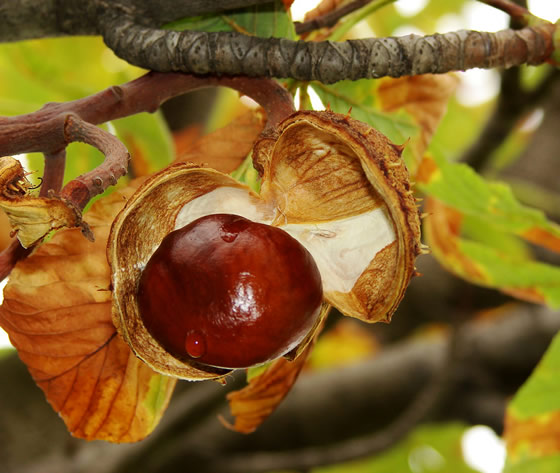 |
| Horse Chestnut |
The European horse chestnut, Aesculus hippocastanum, is the horse chestnut most frequently used in herbal medicine. It is a member of the Hippocastanaceae family. Horse chestnuts are in an entirely different botanical family from the well-known sweet chestnut tree, Castanea vesca. Horse chestnuts exist in nature as both a tree and a shrub, and are found in all temperate regions of Europe, Asia, and North America.
There are 15 recognized species of horse chestnut. The European horse chestnut is believed to have originated in the Balkan region of eastern Europe but is now grown in every country in the Northern Hemisphere.
The name Aesculus is actually a misnomer, coming originally from the word esca, meaning food. It was applied by ancient peoples to a certain species of oak; somehow the name was transferred over the years to the horse chestnut.
Horsetail
 |
| field horsetail (Equisetum arvense) |
Horsetail is a perennial plant that is found in or near watery areas such as marshes, streams, or rivers. Horsetail grows in temperate northern hemisphere areas of Asia, Europe, North America, and North Africa. It flourishes where it can root in water or clay soil.
Horsetail is a derivative of larger plants that grew 270 million years ago during the carboniferous period. It belongs to the Equisetaceae family and is a relative of the fern.
There are over 20 species of horsetail. The species most commonly used medicinally is field horsetail (Equisetum arvense). E. arvense grows up to 1.5 ft (0.5 m) in corn fields and wet meadows. Wood horsetail (E. sylvaticum) grows in copses and on hedgebanks, usually to a height of 1-2 ft (0.3-0.6 m).
Hot Flashes
 |
| Hot Flashes |
Hot flashes, experienced by large numbers of women and some men as a result of surgical, chemical, or age-induced changes in estrogen levels, are characterized by a rapid rise and discharge of heat with perspiration, discomfort, and possible redness.
Ranging from mild to severe in intensity, they may be preceded by an “aura-like” experience, and may be followed by a subsequent feeling of chill. With natural age-related menopause, hot flashes may begin as early as two years prior to the cessation of menses and continue as long as five or more years afterward. Statistically, the average experience is approximately four years of hot flashes of varying intensities.
Approximately 20% of women without breast cancer and 50–75% of women taking tamoxifen subsequent to breast cancer will reportedly seek a doctor’s advice for the management of hot flashes.
Hydrotherapy
Hydrotherapy, or water therapy, is the use of water (hot, cold, steam, or ice) to relieve discomfort and promote physical well-being.
The therapeutic use of water has a long history. Ruins of an ancient bath were unearthed in Pakistan and date as far back as 4500 B.C. Bathhouses were an essential part of ancient Roman culture. The use of steam, baths, and aromatic massage to promote well being is documented since the first century. Roman physicians Galen and Celsus wrote of treating patients with warm and cold baths in order to prevent disease.
By the seventeenth and eighteenth centuries, bathhouses were extremely popular with the public throughout Europe. Public bathhouses made their first American appearance in the mid 1700s.
Hypercortisolemia
 |
| Hypercortisolemia |
Cortisol is an essential glucocorticoid hormone, a subgroup of steroid hormones, the major hormone secreted by the adrenal glands. Hormones are messenger substances, substances produced in one gland or area of the body that move through the blood and stimulate activity in other glands or areas.
Glucocorticoid hormones affect carbohydrate and protein metabolism. Steroid hormones are hormones related to cholesterol. Hypercortisolemia refers to high amounts of circulating cortisol and may be a pathological or non-pathological condition.
Pathological hypercortisolemia, or Cushing’s syndrome, named after the United States surgeon, Harvey Cushing (1869–1939), may result from a lung cancer, tumor of the pituitary or adrenal glands, or from kidney failure.
Hypertension
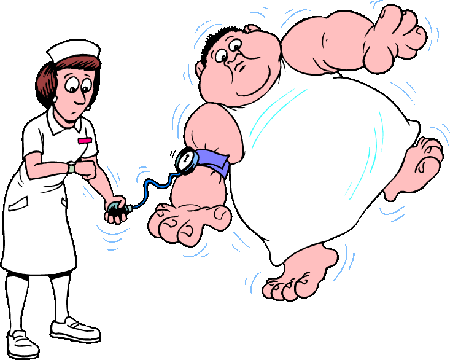 |
| Hypertension |
Hypertension is the medical term for high blood pressure. Blood pressure is the force of blood pushing against the walls of arteries as it flows through them. Arteries are the blood vessels that carry oxygenated blood from the heart to the body’s tissues.
As blood flows through arteries, it pushes against the inside of the artery walls. The more pressure the blood exerts on the artery walls, the higher the blood pressure. The size of small arteries also affects the blood pressure.
When the muscular walls of arteries are relaxed, or dilated, the pressure of the blood flowing through them is lower than when the artery walls are narrow, or constricted.
Hypnotherapy
 |
| Hypnotherapy |
Hypnotherapy is the treatment of a variety of health conditions by hypnotism or by inducing prolonged sleep.
Hypnotherapy is thought to date back to the healing practices of ancient Greece and Egypt. Many religions such as Judaism, Christianity, Islam, and others have attributed trance-like behavior to spiritual or divine possession.
An Austrian physician, Franz Mesmer (1734–1815), is credited with being the first person to scientifically investigate the idea of hypnotherapy in 1779 to treat a variety of health conditions. Mesmer studied medicine at the University of Vienna and received his medical degree in 1766.
Hyperparathyroidism
Hyperparathyroidism is the overproduction by the parathyroid glands of a hormone called parathyroid hormone (parathormone). Parathyroid glands are four pea-sized glands located just behind the thyroid gland in the front of the neck. Parathyroid hormone (parathormone) helps regulate the levels of calcium and phosphorus in the body.
Thyroid glands and parathyroid glands, despite their similar names and proximity, are entirely separate, and each produces hormones with different functions.
Hyperparathyroidism may be primary or secondary. It most often occurs in patients over age 30, and most commonly in patients 50 to 60 years old. It rarely occurs in children or the elderly. Women are affected by the disease up to three times more often than men. It is estimat- ed that 28 of every 100,000 people in the United States will develop hyperparathyroidism each year.
Hyperthermia
Hyperthermia involves raising the body’s core temperature as a means of eradicating tumors. The treatment simulates fever. Some therapies actually bring on fever through the introduction of fever-causing organisms, while others raise body temperature by directly heating the blood.
Hyperthermia dates back to investigations begun in 1883 by William B. Coley, M.D., a general surgeon at New York City’s Memorial Hospital. Coley was intrigued by a paper published in 1868 by an American family physician named Busch. Busch’s paper described a patient with an untreatable sarcoma of the face.
Though Busch had been unable to help the patient overcome her cancer, the patient went into remission spontaneously after suffering a bout of the skin infection known as erysipelas. The erysipelas resulted in a high fever ranging from 104°F to 105.8°F (40°C to 41°C).
Huna
Huna is an esoteric Polynesian psychology that claims to use the powers of the mind to accomplish healing and spiritual development. Max Freedom Long, who rediscovered Huna in the 1920s, defined it as a system of religious psychiatry because it contains elements of religion, psychology, and psychic science.
Huna practitioners believe their teachings are ancient and sacred, although at least one writer has claimed they actually have modern origins. In the Hawaiian language, the word huna means “secret” or “that which is hidden,” referring to a tradition of hiding these teachings.
The word is also said to be taken from kahuna,a priest or teacher who was the “keeper of the secret.” Huna has traditionally been passed on through oral communication and in chants rather than in writing.
Huna was outlawed in the nineteenth century by Christian missionaries to the Hawaiian Islands. Max Freedom Long, who founded the Huna Fellowship in 1945, spent years decoding the language of Huna knowledge. He published eight books on Huna between the 1920s and his death in 1971. Serge Kahili King, a non-Polynesian kahuna, founded One Order of Huna International in 1973.
Huna practitioners believe their teachings are ancient and sacred, although at least one writer has claimed they actually have modern origins. In the Hawaiian language, the word huna means “secret” or “that which is hidden,” referring to a tradition of hiding these teachings.
The word is also said to be taken from kahuna,a priest or teacher who was the “keeper of the secret.” Huna has traditionally been passed on through oral communication and in chants rather than in writing.
Huna was outlawed in the nineteenth century by Christian missionaries to the Hawaiian Islands. Max Freedom Long, who founded the Huna Fellowship in 1945, spent years decoding the language of Huna knowledge. He published eight books on Huna between the 1920s and his death in 1971. Serge Kahili King, a non-Polynesian kahuna, founded One Order of Huna International in 1973.
Humor Therapy
Humor therapy is the art of using humor and laughter to help heal people with physical or mental illness.
The benefits of humor therapy were acknowledged as far back as the book of Proverbs in the Old Testament, which contains verses like Prov. 17:22: “A cheerful heart is a good medicine, but a downcast spirit dries up the bones.”
The earliest historical reference to humor therapy is from the fourteenth century, when French surgeon Henri de Mondeville wrote, “Let the surgeon take care to regulate the whole regimen of the patient’s life for joy and happiness, allowing his relatives and special friends to cheer him, and by having someone tell him jokes.”
Hypothyroidism
Hypothyroidism, or a condition of insufficient thyroid hormone in the body, develops when the thyroid gland fails to produce or secrete as much thyroxine (T4) and triiodothyronine (T3) as the body needs.
Because T4 regulates such essential functions as heart rate, digestion, physical growth, and mental development, an insufficiency of this hormone can slow life-sustaining processes, damage organs and tissues in every part of the body, and lead to life-threatening complications.
Hypothyroidism is one of the most common chronic diseases in the United States. Symptoms may not appear until years after the thyroid has stopped functioning, and they are often mistaken for signs of other illnesses, menopause, or aging. Although this condition is believed to affect as many as 11 million adults and children, as many as two of every three people with hypothyroidism may not know they have the disease.
Subscribe to:
Posts (Atom)
